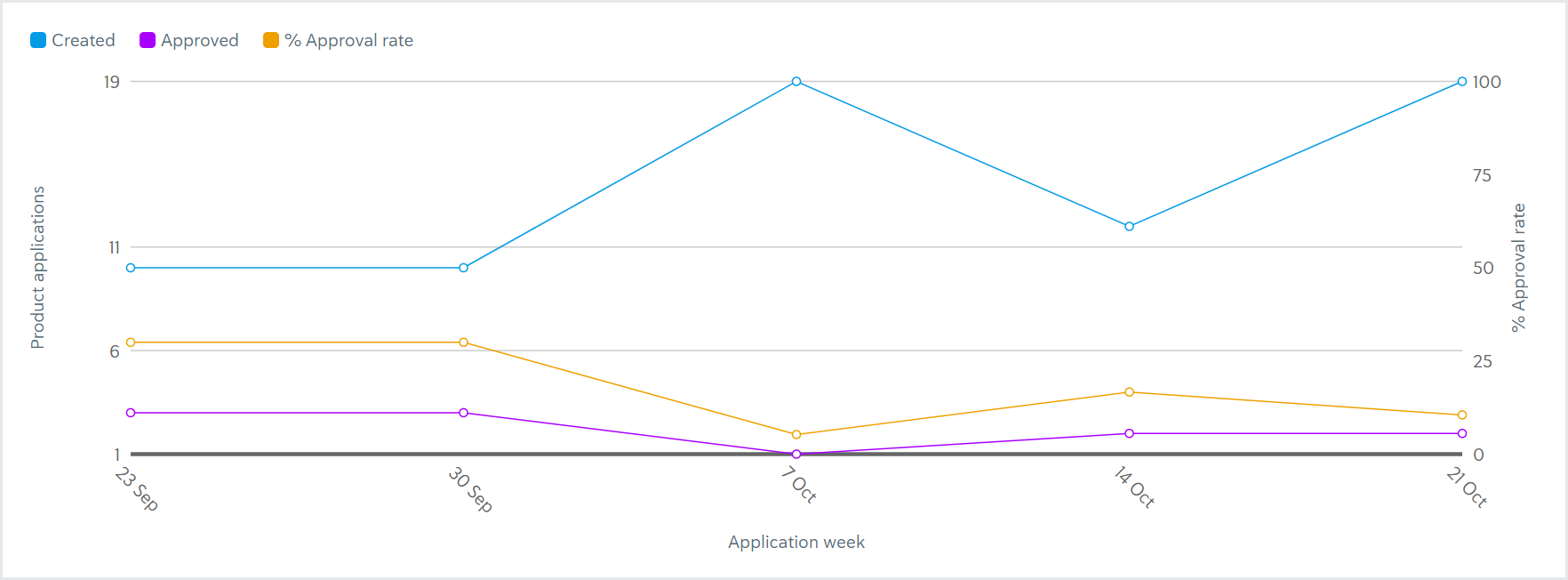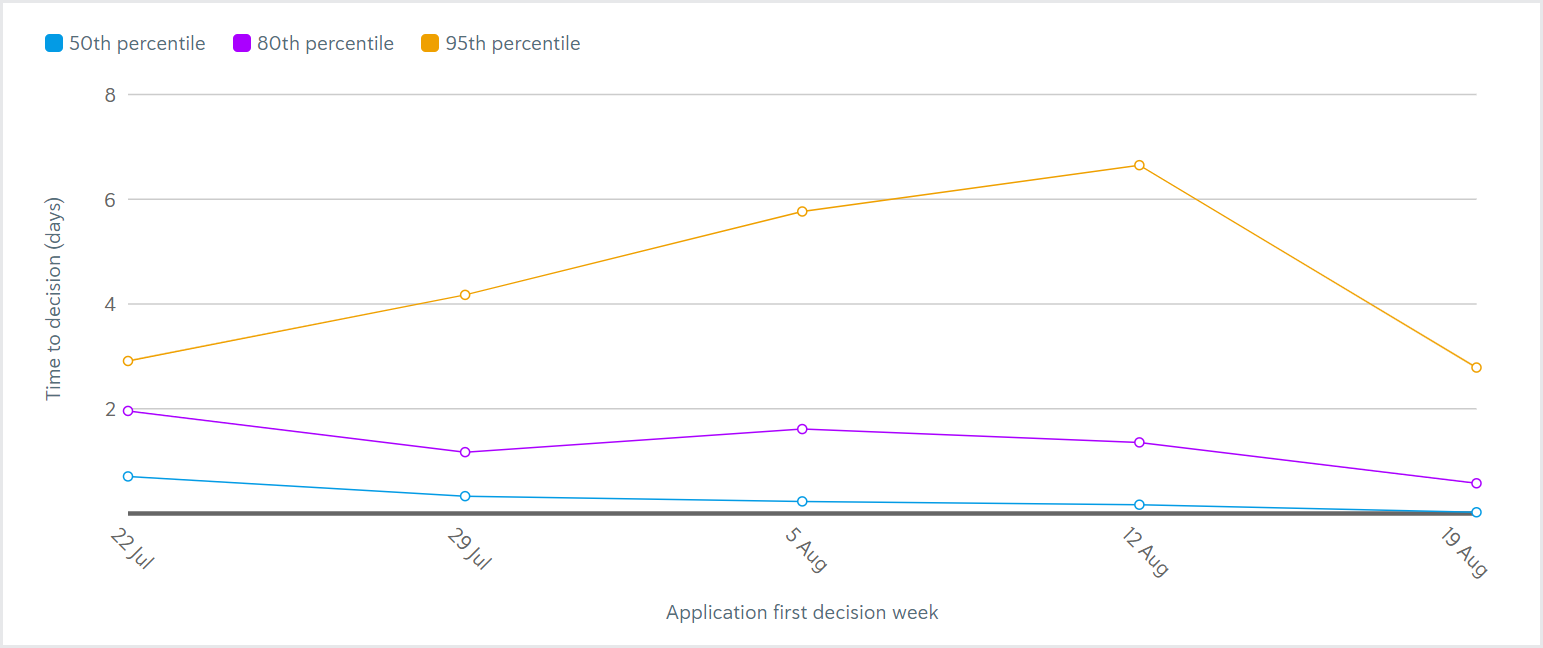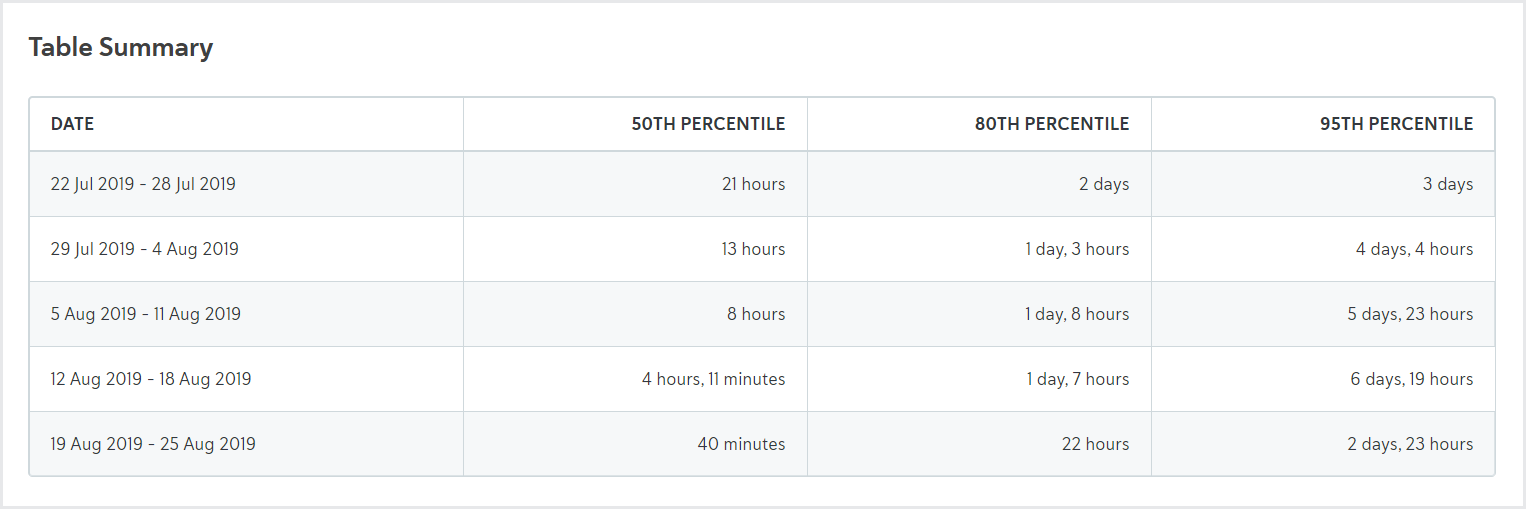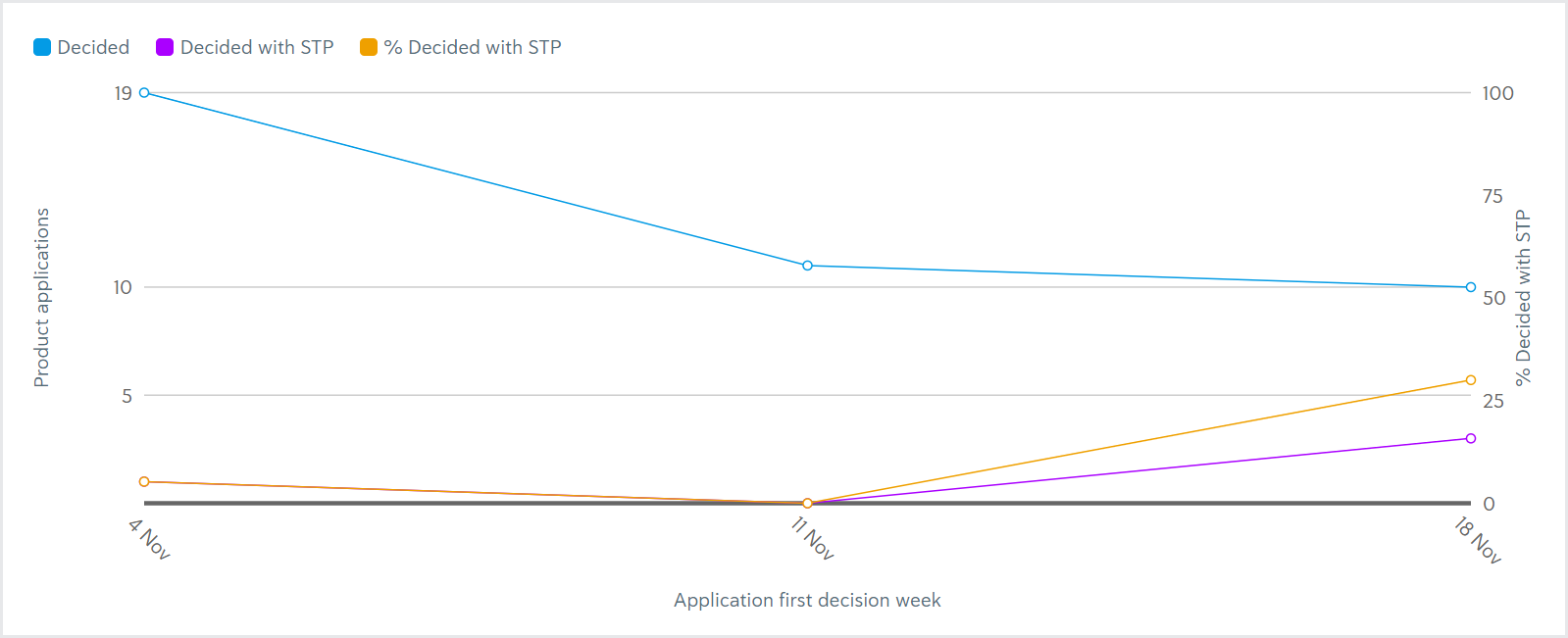Assessment reports (v1)
Note
We have updated the names of some of our key concepts on the Maxsight front-end platform so that they're simpler and more intuitive to understand:
Entity replaces Profile.
Assessment replaces Product/Product application.
Workflow replaces Application flow/Smart policy flow.
External request replaces Customer request.
Learn more about our Updated naming conventions.
The terminology used in Maxsight's reports has not changed and follows the previous naming convention.
These are the reports for assessments, which are called product applications in reports:
Conversion rate
Time to decision
Straight through processing (STP)
To view a report, go to the tab, select , and select the report you want to see.
By default, all reports show data for your entities under assessment. To view the data for company associates, change the Profile type filter criterion options. To learn more about when your data refreshes, how data is displayed in the graph and table, and more, see About reports (v1).
Conversion rate report
The Conversion rate report shows the percentage of assessments that have passed each week.
There are three metrics:
Created: The number of assessments created that week.
Approved: The number of assessments created that week that have passed since then.
% Approval rate: The percentage of assessments created that week that have passed since then.


In the preceding example, ten assessments were created the week of September 23. Three of those ten assessments have passed since, making the approval rate 30%. They may have passed at any time.
Time to decision report
The Time to decision report shows the amount of time it took for a percentile of assessments to be decided (passed or failed) each week.
There are three metrics:
50th percentile: The amount of time it took for 50% of the assessments passed/failed that week to be decided.
80th percentile: The amount of time it took for 80% of the assessments passed/failed that week to be decided.
95th percentile: The amount of time it took for 95% of the assessments passed/failed that week to be decided.


In the preceding example, 50% of the assessments passed/failed the week of July 22 were decided in 21 hours or less. 80% of assessments passed/failed that week were decided in two days or less. 95% of assessments passed/failed that week were decided in three days or less.
This report shows the time to the first assessment decision. For example, if an assessment was initially passed and then later failed, the Time to decision report only shows the amount of time before the assessment was passed. If the Time to decision report shows 0 seconds, there is no data for that plot point. For example, if the 50th percentile of assessments in a given week were decided in 0 seconds, there were likely no assessments decided that week.
Straight through processing (STP) report
The Straight through processing (STP) report shows the percentage of assessments decided that week that did not have any manual intervention during the date range. Learn more about how STP is determined.
There are three metrics:
Decided (all): The number of assessments decided that week, including those decided with STP and those decided with manual intervention.
Decided with STP: The number of assessments decided that week that did not have any manual intervention.
% decided with STP: The percentage of assessments decided that week that did not have any manual intervention.


In the preceding example, ten assessments were decided the week of November 18. Of those ten assessments, three were decided with STP, which means that 30% of all assessments decided that week were decided with STP.
This data shows the time to the first assessment decision. For example, if an assessment was initially passed, then later failed, the STP report only shows the amount of time before the assessment was passed.